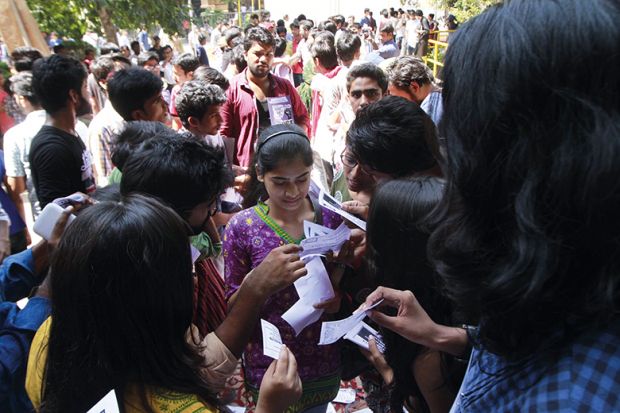According to a recent Times Higher Education analysis, India fares the worst for gender parity among the student population at its top universities. It is perhaps an alarming reminder that the country still has a long way to go on gender equality despite recent improvements in the female gross enrolment rate, which, according to the latest survey by India’s Ministry of Human Resources Development, still stands at just 25.4 per cent of female 18- to 23-year-olds going into higher education.
Besides institutional lapses that include poor attempts at gearing campuses towards the needs of women, several deep-rooted socio-economic reasons are at the core of the issue. Women in India are often subjected to societal prejudices about marriage, childbirth and household responsibilities, which leads to their dropping out of education, especially in science, technology, engineering and mathematics, where the university enrolment figures are particularly grim compared with other nations.
The drop-out rates are especially acute in areas with the worst poverty. Although India managed to almost halve the number of people living in poverty in the 10 years to 2015-16, according to the latest Global Multidimensional Poverty Index, the reality is that India still has about 364 million people who are deprived of the basic necessities of health and education.
Almost half of this population resides in the states of Bihar, Jharkhand, Uttar Pradesh and Madhya Pradesh, which has a major influence on higher education enrolment generally and gender parity for students as well as teaching and non-teaching staff in these four regions. Women in the poorest areas are the first to be pulled out of education in times of family crisis. Even those in the system who make it to higher education are largely found in “traditional” fields such as nursing or home science. Moreover, the high crime rate in several states deters parents from sending their adolescent girls to colleges.
Although it is unfair to say that the Indian government has not taken any measures towards improving the situation, the efforts clearly are not enough. A few important initiatives that deserve a mention include the University Grants Commission’s notification on gender-neutral regulations for sexual harassment on campuses, a recent direction by the MHRD to ensure reserved places for female applicants to Indian Institutes of Technology and a similar effort by the Indian Institutes of Management after seeing a drop in the number of female students last year.
However, it is necessary to note that a minuscule share of the female population is actually contained in these premier institutions. Thus, the target for reserved places for women should also include the government-run public universities and the numerous affiliated colleges operating under them. While this is definitely not the only solution, it can help improve enrolment rates in these institutions – eventually contributing to an overall boost in the GER.
The MHRD will also need to shift its focus in other areas from premier institutes to state-level institutions. Some of these universities and colleges, especially in the semi-urban and rural areas, lack adequate campus infrastructure such as toilets and crèches to support an adolescent female population. Besides the federal government, the states should share the responsibility by implementing policy interventions to help improve gender parity. Although the recently released draft new National Education Policy for India “aims to integrate gender as a cross cutting priority for all aspects of policy implementation”, it will eventually be the responsibility of the respective states to effectively implement these policies.
Additionally, to tackle the problem at its root, female students and their parents need to be counselled during the high school years to educate them about possible career and academic options at the undergraduate level and beyond. Currently, there is a tremendous focus on creating vocational education opportunities in India and there is a need to think about women’s participation in this so they too can contribute to the country’s economic growth story.
While Narendra Modi’s previous term saw the launch of the ambitious “Beti Bachao, Beti Padhao” (Save the daughter, educate the daughter) scheme to tackle gender imbalance in the population, the interim annual budget saw cuts to some schemes aimed at specifically boosting education for women. With the new National Education Policy, one can only hope that this government makes gender parity an important agenda for education as well.
Antara Sengupta is a research fellow based at the Mumbai centre of the Observer Research Foundation.
后记
Print headline: India has ‘a long way to go’ for women in HE




